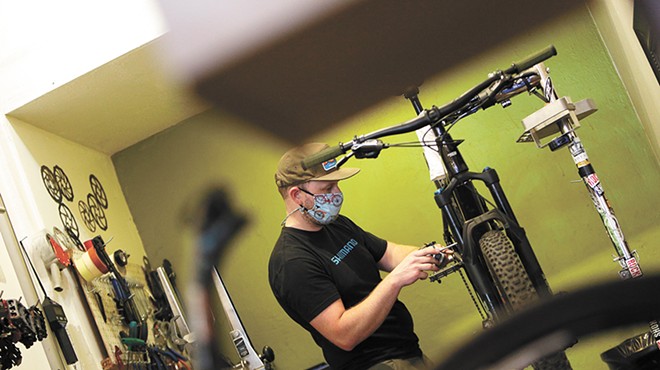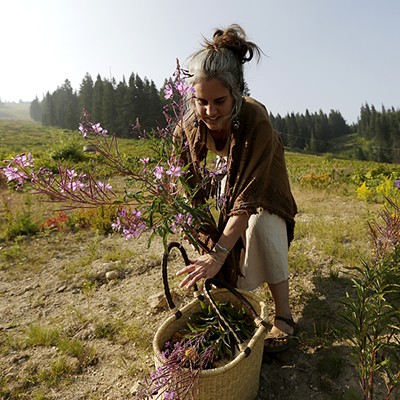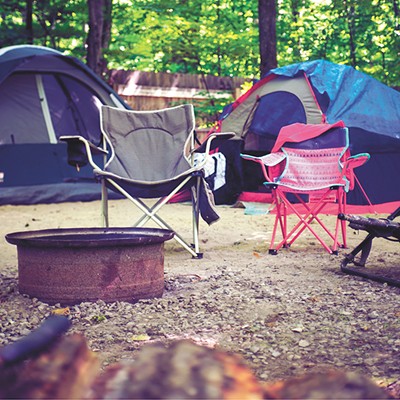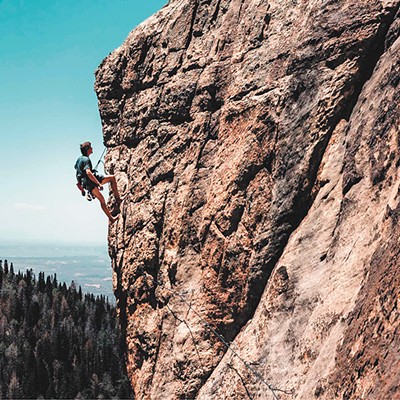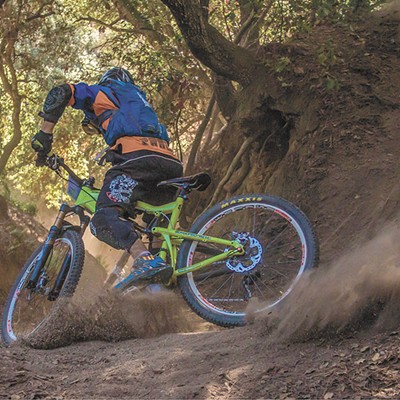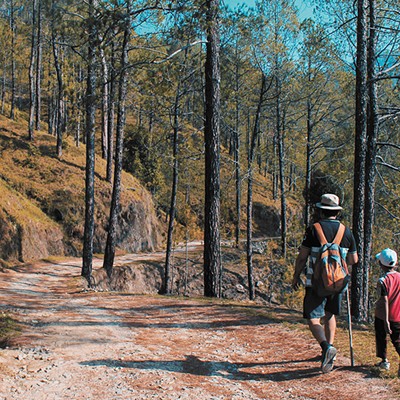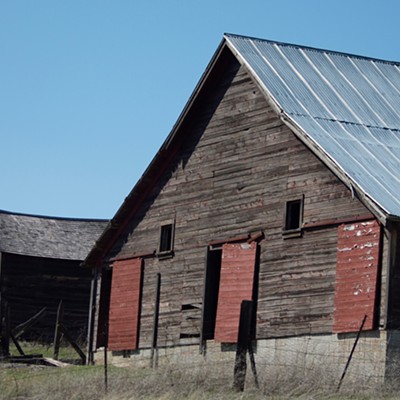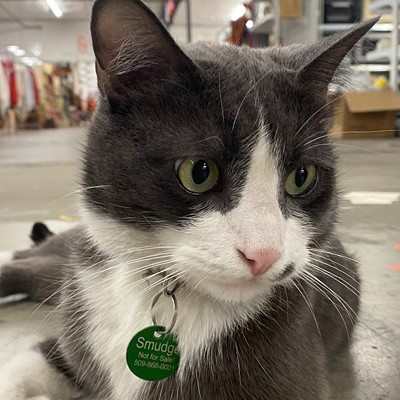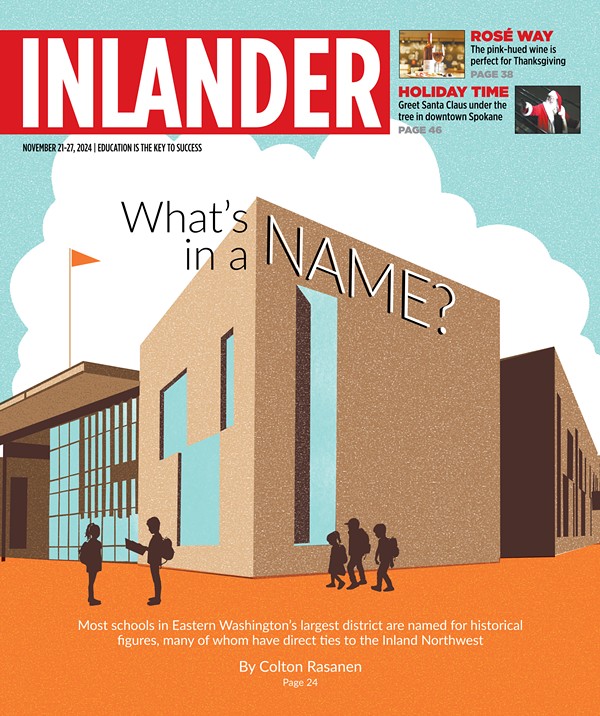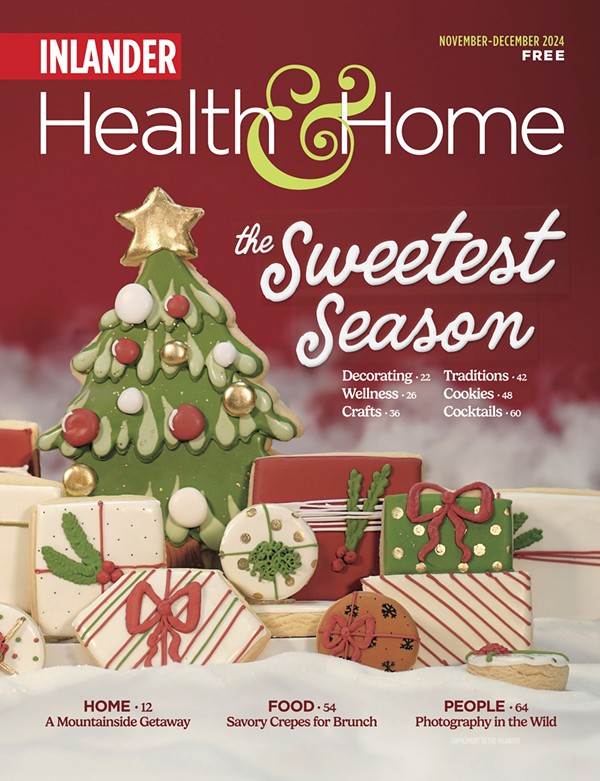It's embarrassing to admit, but after living in the Inland Northwest all my life, the first time I went huckleberry picking was last summer. It was by chance we even encountered the prized sweet-tart berry on a hike at Mount Spokane, although I packed a gallon-size plastic bag just in case.
The bushes laden with perfectly ripe, ruby-colored berries were everywhere along a popular trail. By day's end, we'd collected more than a pound, later baked into huckleberry hand pies and pancakes. As we excitedly picked, I remember constantly thinking how unusual it was that these bushes were right here, and still had fruit on them!
I'd always believed one didn't just "stumble upon" huckleberries, that the prime picking spots were secrets passed down through generations, and that the berries were sort of rare. Or that bushes on publicly accessible lands, certainly in a popular state park, would be quickly stripped of their bounty before many others would get the chance.
Foraging expert Josh Yake, who's run the local farmers market stand and wholesale business Gourmet Foragables & More for a decade, laughs at my story.
"Are you serious?" Yake asks.
"On Summit Road in the summer you have cars parked bumper-to-bumper and families there just picking berries," he continues. "If you go in an extra 30 yards and find a little spot and pick for yourself, there's acres and acres where there's nothing but huckleberries."
While huckleberry season is still several weeks out, usually mid- to late-July into August, Yake doesn't think it'll be a bumper year with the wet spring we've had. Some of the bushes he's seen while foraging for other plants don't show signs they'll be heavily fruited this year.
Yake started in foraging by selling hand-picked huckleberries at local markets, but then he discovered wild mushrooms and now focuses most of his time harvesting morels, chanterelles and other native varieties. He sells weekly at the Kendall Yards Night Market (Wednesday, 5-8 pm), Liberty Lake Farmers Market (Saturday, 9 am-1 pm) and occasionally at the Spokane Valley and South Perry farmers markets.
Before setting out to discover the wild bounty of edible, native plants, Yake has several tips to offer.
"First and foremost, make sure you have [the plant] identified by an expert or are with an expert the first time you go out," he says, especially for mushrooms. "That sounds obvious, but every year I hear from people, experienced foragers even, who screw up.
"Foraging is also highly seasonal," he continues. "You not only need to have an idea of what you want to look for, you gotta know when to go."
For example, morel mushrooms are in season now at higher elevations, around 5,000 feet and up. Meanwhile, the harvest window for fiddlehead ferns, tightly coiled young shoots of an ostrich fern with a nutty, earthy flavor, just ended. Nettle season has also passed, Yake says.
"The other thing that I try to keep doing every year is to open my eyes to what else is available," he says. "The latest thing for me is edible wildflowers. Learn to find value in what you find for yourself, because there is just endless food out there."
While commercial foragers like Yake are required to carry permits to harvest on public lands, rules differ for personal use.
In the Idaho Panhandle National Forests, a trio of forests managed by the U.S. Forest Service stretching across Eastern Washington, North Idaho and Western Montana, commercial picking of native plants is not allowed, says forest spokesperson Patrick Lair.
Permits aren't needed to pick huckleberries for personal consumption, Lair says, but visitors are asked to only gather as many berries as they can consume. Personal-use permits to pick morel mushrooms are occasionally required, but not if a person picks no more than 1 gallon of morels per day, or up to 5 gallons total in one season.
In Washington State Parks, including Mount Spokane, commercial harvest of any edible species is not allowed, and limits for personal consumption are capped at two gallons per person per day, unless otherwise posted.
Meanwhile, at the privately owned Schweitzer Mountain Resort outside Sandpoint, huckleberry picking is open to visitors with no limits; the resort even offers a Saturday huckleberry shuttle during picking season.
If you're unsure which rules apply where you're visiting, the best option is to contact the forest, Yake says.
"Even in-state, Mount Spokane might have different rules than Mount St. Helens, so just check with the forest you're going to," he says. "The other benefit of that is they'll help you out. [Rangers] are out in their trucks every day, and it's part of their outreach to help people recreate." ♦




